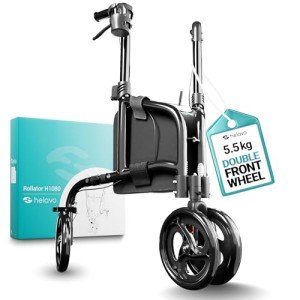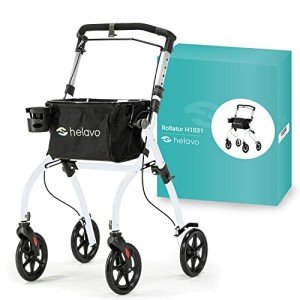This company has no active jobs
How Bariatric Walker Was The Most Talked About Trend In 2024
Understanding Bariatric Walkers: A Comprehensive Guide
As the population ages and the prevalence of obesity boosts, the demand for adaptive mobility help, such as bariatric walkers, has risen substantially. These specialized walkers are developed to support much heavier people, offering security, stability, and mobility. In this article, we will explore the numerous aspects of bariatric walkers, including their benefits, features, types, and considerations for usage, ensuring you have an extensive understanding of this essential mobility aid.
What is a Bariatric Walker?
A bariatric walker is a kind of mobility aid specifically designed to support individuals who are obese or obese. Unlike routine walkers, bariatric walkers are built with enhanced products and features to provide increased resilience, stability, and weight-bearing capability. They are an important tool to boost mobility, independence, and safety for individuals carrying out rehabilitation or those with chronic health conditions.
Secret Features of Bariatric Walkers
Bariatric walkers come equipped with different features customized to the needs of bigger individuals. Here are a few of the crucial features one can expect:

| Feature | Description |
|---|---|
| Weight Capacity | Generally supports between 300 to 600 pounds |
| Frame Construction | Made from robust products like aluminum or steel |
| Adjustable Height | Height can be adapted to accommodate numerous users |
| Wide Base | Wider base for enhanced stability and balance |
| Hand Grips | Padded, ergonomic grips for comfort |
| Wheels | Can have 2 or four wheels for mobility options |
| Devices | May consist of a seat, storage basket, or tray |
Types of Bariatric Walkers
When considering a bariatric walker, it's essential to understand the various types available:
Two-Wheel Bariatric Walker

- Features a lightweight frame with 2 front wheels.
- Perfect for users requiring minimal assistance while walking.
Four-Wheel Bariatric Modern Rollator Walker
- Provides more mobility and typically consists of a seat.
- Suggested for users needing more support and the option to rest.
Rolling Elderly Walker
- Comparable to four-wheel walkers however usually includes a braking system.
- Supplies easier navigation for larger people.
Dual-Function Walkers
- Integrates features of conventional walkers and rollators.
- Appropriate for users seeking flexibility in mobility options.
Walker with Seat
- Permits users to rest throughout walks, an essential feature for those with minimal stamina.
Benefits of Using Bariatric Walkers
The benefits of utilizing a bariatric walker extend beyond mobility. A few of the most significant advantages include:
- Increased Safety: With tough construction and enhanced stability, bariatric walkers minimize the danger of falls and injuries.
- Boosted Mobility: Users can gain back independence, moving about their homes and neighborhoods more easily.
- Enhanced Confidence: With the capability to move safely, people typically experience an increase in self-esteem and confidence.
- Helping Rehabilitation: Essential for physical treatment and rehabilitation, helping with motion and healing.
- Weight Distribution: Designed to support a larger weight distribution successfully, they promote better posture and balance.
Considerations When Choosing a Bariatric Walker
Selecting the right bariatric walker is vital for ensuring security and comfort. Here are some vital elements to think about:
Weight Capacity: Always examine the maximum weight limitation to ensure the walker can accommodate the user's weight securely.
Height Adjustability: Select a Compact Rollator Walker with adjustable heights to cater to the user's stature.
Foldability: Consider a foldable walker for easy transport and storage.
Wheel Size and Type: Depending on the walking surface, larger wheels might help with smoother motion over bumps and transitions.
Storage Options: Additional features like baskets or trays can be important for bring individual products.
FAQs about Bariatric Walkers
Q: How do I understand if a bariatric walker is ideal for me?A: Consult a healthcare professional or physical therapist, who can examine your requirements and advise the most suitable mobility aid. Q: Can bariatric walkers be utilized outdoors?A: Yes, numerous bariatric walkers are created for indoor and outdoor use, especially those with larger wheels. Q: How much do bariatric walkers typically cost?A: Prices can vary commonly, generally varying from ₤ 100 to ₤ 400, depending upon the features and brand name. Q: Is assembly required condition. Bariatric walkers play an essential role in improving mobility and promoting self-reliance for much heavier people. With numerous designs, features, and factors to consider, it is essential to discover the best walker that fits the user's specific needs. By comprehending the information outlined in this guide, users and caretakers can make informed choices to facilitate safer and more comfortable mobility. As individuals look for the best options for mobility difficulties, the bariatric walker stays a reliable and necessary choice for promoting an active and independent lifestyle, paving the method for boosted quality of life.
for bariatric walkers?A: Some designs come pre-assembled, while others might require easy assembly. Always examine the item description. Q: How do I keep my bariatric walker?A: Regularly examine
the walker for loose parts, ensure wheels and brakes operate properly, and clean it routinely to keep it in ideal
- Endereço Australia
